Every project that involves more than one person should have a scope of work, or SOW. Even very small projects benefit from having one. A good scope of work is a tool that will provide the designer, client, and anyone else involved with a clear vision of what is and should be done and how.
An SOW can be simple or complex, depending on who writes it and the project. Here are 4 key parts that should be in every SOW, and 4 things to watch out for.
Brief
This is simply a short summary describing what the project is. It should be detailed but concise. A good brief will give anyone a clear picture of what the project is about.
Deliverables

This is what the designer will hand you when the project is complete. Some examples would be concept sketches, manufacturing documentation, marketing plan, website, brand assets, etc. This is everything that must be completed for the job to be considered done.
Requirements
This is where technical requirements, specifications, product features, manufacturing considerations, costing, and other related details should be included. Only quantifiable things should be here. “Looking nice” isn’t a requirement you can quantify while “Waterproof” is. Depending on the project, this is also where specific tasks can be outlined.
Timeline

The timeline is always important to have as it makes it clear what the expectations are exactly. You could say, I’d like this soon, but that means different things to different people, maybe soon is a day, maybe it’s 6 months.
This is a subject for another post, but the basics are you need a timeline, period. If you make it an estimate, rather than exact, just make sure it’s realistic.
Also, be weary of timelines that come from designers that seem too good to be true, this either means they are super heroes, they don’t understand the project fully, or don’t have experience in your industry.
These are the most common section of an SOW. In addition to this, some include admin/management information, such as payment, change request process, legal information, points of contact, etc.
At our firm, we put everything together into a single document that covers legal, finance, and SOW. There are many ways to do this, and each firm/designer has their own way of writing up the entire starting packet of documents.
While designers love when a client comes to them with a clear SOW, great designers can also work with clients to develop a clear SOW through a process we call a discovery phase. We realize many people developing new products may need help, and a good designer will be able to gather this information and write a comprehensive SOW for you.
Your Next Steps
Related Conscious Design BLOG Posts
The 4 Things Your Scope of Work Should Have
Every project that involves more than one person should have a scope of work, or SOW. Even very small projects benefit from having one. A good scope of work is a tool that will provide the designer, client, and anyone else involved with a clear vision of what is and should be done and how.
Project Timeline: 3 Things You Need To Have When Creating One
If you and your designer have these three items, then a viable timeline can be created by the designer.
9 Great Points on Scope Creep
Some of you may have heard of the terrible thing we call scope creep, and others may not have. As a quick overview, scope creep is what happens when you have a well-defined Scope of Work, a set timeline, things are going great, and little by little extra things are added in to the project.


